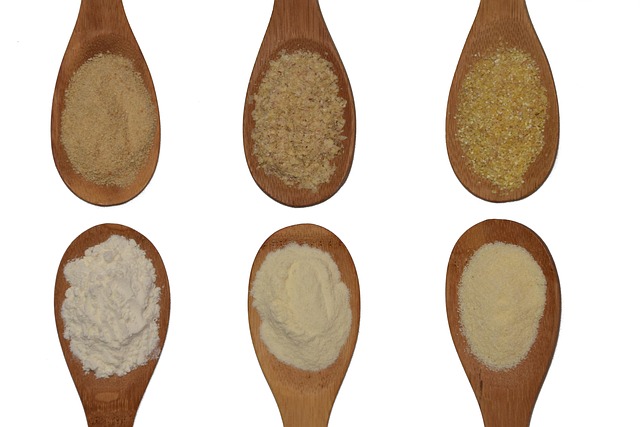Search Engine Results Pages (SERPs) now include SERP Breadcrumbs, structured data that helps users and search engines understand website navigation. Website owners should implement Breadcrumb JSON-LD schema for Google to display these breadcrumbs accurately, improving user experience by providing context, reducing bounce rates, and boosting click-through rates. Best practices involve maintaining a clear hierarchy with descriptive labels, using JSON-LD markup for accuracy, and tracking key metrics like CTRs, session duration, and bounce rates to measure success. Correct implementation optimizes user navigation and SEO, avoiding common mistakes like overcomplicating the schema.
Adding breadcrumb schema to your website is a powerful strategy to enhance user experience and search engine optimization (SEO). In this article, we explore SERP breadcrumbs: why they matter and how they provide clarity in search results. We delve into what exactly a breadcrumb schema is, offer a step-by-step guide to implementation, share best practices, and discuss tracking success. By the end, you’ll understand how to avoid common mistakes when incorporating breadcrumbs for improved internal linking and better visibility on search engine result pages (SERPs).
- Understanding SERP Breadcrumbs: Why They Matter
- What is a Breadcrumb Schema?
- Implementing Breadcrumb Schema: Step-by-Step Guide
- Best Practices for Effective Breadcrumb Use
- Measuring Success: Tracking the Impact of Breadcrumbs
- Common Mistakes to Avoid When Adding Breadcrumb Schema
Understanding SERP Breadcrumbs: Why They Matter

Search Engine Results Pages (SERPs) have evolved to provide users with a wealth of information at a glance. One essential element in this evolution is the concept of SERP breadcrumbs, which offer a structured overview of a website’s navigation and content hierarchy. These breadcrumbs serve as a visual guide, showcasing the path a user has taken or could take while browsing a site, right within the search results.
For website owners and SEO strategists, implementing a schema for navigation, specifically using Breadcrumb JSON-LD, is crucial. It ensures that search engines like Google can interpret and display breadcrumbs effectively. This simple yet powerful tool enhances the user experience by providing context and clarity. When Google breadcrumb display is optimized, users can quickly understand their current location on the site, making it easier to navigate and increasing the likelihood of them exploring more relevant content.
What is a Breadcrumb Schema?

A Breadcrumb Schema is a structured data markup that helps search engines and users understand the hierarchy and context of a webpage within a website’s navigation structure. It provides a clear representation of the page’s place in the site’s overall information architecture, often displayed as a trail or path leading back to the homepage. By implementing this schema, you enable search engines like Google to display rich snippets with SERP Breadcrumbs, showing users exactly where they are on your website and how to navigate back to previous pages.
This markup for crumbs is particularly useful for large websites with complex structures, helping both visitors and search engine crawlers to explore the site more effectively. It provides a visual cue of the user’s location, making it easier to browse and improving the overall user experience. Additionally, Google Breadcrumb Display enhances the website’s discoverability by offering a clear navigation path in search results, potentially increasing click-through rates and driving more traffic to relevant pages.
Implementing Breadcrumb Schema: Step-by-Step Guide

Implementing Breadcrumb Schema: A Step-by-Step Guide
To add breadcrumb schema to your website and enhance its internal linking structure, follow these simple steps. First, identify the parent pages for each section or category you want to include in your breadcrumbs. Next, create a JSON-LD script that defines your site’s SEO breadcrumb trail. This script should list each page as a step in the hierarchy, linked to its respective parent. For instance, if you have a blog post about “SEO Best Practices,” your breadcrumb trail might look like this: `”itemListElement”: [{ “@type”: “ListItem”, “position”: 1, “name”: “Home”, “item”: “https://www.example.com/”}, { “@type”: “ListItem”, “position”: 2, “name”: “SEO”, “item”: “https://www.example.com/seo/”}, { “@type”: “ListItem”, “position”: 3, “name”: “SEO Best Practices”, “item”: “https://www.example.com/seo/best-practices”}]`.
Once your JSON-LD script is ready, embed it within the “ section of every page where you want to display the breadcrumbs. Ensure that Google can properly interpret and display your schema by validating it through tools like Google’s Structured Data Testing Tool. With these steps, you’ll be well on your way to improving both user experience and search visibility by showcasing SERP breadcrumbs that reflect your website’s hierarchy.
Best Practices for Effective Breadcrumb Use

When implementing breadcrumb schemas, several best practices ensure their effectiveness. Firstly, maintain a hierarchical structure that clearly reflects the parent-child relationships between pages. This helps users and search engines understand the site’s organization. Secondly, use descriptive labels for each crumb, including relevant keywords to enhance both user experience and SEO. Avoid jargon or vague terms that might confuse visitors.
For optimal SEO breadcrumbs, consider utilizing JSON-LD markup for crumbs. This structured data helps search engines interpret and display your breadcrumb trail accurately in SERPs. Ensure the schema is valid and follows best practices for accuracy and potential future algorithm updates. Remember, a well-structured SEO breadcrumb trail enhances user navigation, reduces bounce rates, and can significantly improve a site’s click-through rate from organic search results.
Measuring Success: Tracking the Impact of Breadcrumbs

Measuring the success of implementing a breadcrumb schema involves tracking its impact on user behavior and search engine results pages (SERPs). By utilizing analytics tools, webmasters can gauge how users interact with the new navigation structure. This includes monitoring click-through rates (CTRs) from organic search results, as higher CTRs indicate that SERP breadcrumbs are effectively guiding users to relevant pages. Additionally, analyzing session duration and bounce rates provides insights into user satisfaction and the overall clarity of internal linking.
The success of a breadcrumb schema can also be evaluated by comparing its performance with traditional navigation methods. By observing changes in user engagement metrics, webmasters can determine if the JSON-LD markup for breadcrumbs or similar markup for “crumbs” has significantly improved the site’s discoverability and usability. This data-driven approach ensures that any adjustments to the schema are based on real-world performance, enhancing the overall search engine optimization (SEO) strategy.
Common Mistakes to Avoid When Adding Breadcrumb Schema

When implementing breadcrumb schema, several common mistakes can lead to a suboptimal user experience and diminished SEO benefits. One of the primary blunders is neglecting to use the schema appropriately for complex website structures. Breadcrumb JSON-LD should be employed to represent intricate navigation hierarchies accurately, ensuring both search engines and users understand the site’s organization.
Another error is overcomplicating the SEO breadcrumb trail. While it’s essential to provide clear paths in SERPs, keeping the markup simple and structured is vital. Avoid unnecessary data or overly complex logic, as this might confuse both search engine crawlers and visitors attempting to navigate your website. Remember that a well-structured markup for crumbs enhances user experience and ultimately contributes to better ranking opportunities in SERP breadcrumbs.
